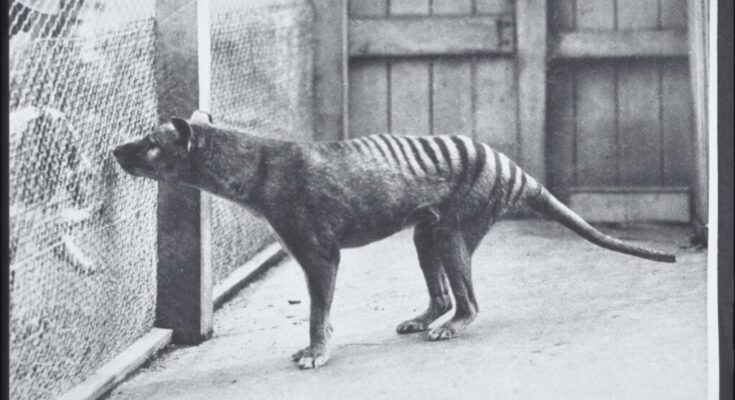
A scientific breakthrough may bring back the extinct thylacine after finding a preserved skull essential to recreating its genome.
The thylacine, also known as the Tasmanian tiger, was Australia’s only marsupial apex predator before it went extinct in 1936. Scientists are now working to recreate the marsupial after finding a well-preserved head of this extinct animal in a bucket in the back of a cupboard at a Melbourne museum.
Professor Andrew Pask, the head of the thylacine integrated genetic restoration research (Tigrr) lab at the University of Melbourne, described the bucket’s less-than-savory discovery.
“It was literally a head in a bucket of ethanol in the back of a cupboard that had just been dumped there with all the skin removed, and been sitting there for about 110 years. It was pretty putrid, a completely gruesome sight. People had chopped large chunks off it.”
The miracle thylacine discovery
The thylacine specimen, appropriately named “head in a bucket,” is nothing short of a miracle find. It contains what researchers thought would be impossible to find. The skull comprises long strains of RNA molecules crucial to recreating the animal’s genome.
“This was the miracle that happened with this specimen,” said Pask. “It blew my mind.”
RNA is rare compared to DNA, as it is less stable and gets destroyed relatively easily. They reconstructed a genome of three billion pairings of nucleotides forming DNA. The available genetic information for thylacine has allowed scientists to progress much more rapidly than they thought they could over the past year.
“We are further along than I thought we would be, and we have completed a lot of things that we thought would be very challenging and others said would be impossible,” said Pask.
Colossal, a Texas-based biotechnology company specifically focused on reviving extinct animals, is funding the project to bring back the thylacine. Colossal has raised over $235 billion and is funding 13 labs worldwide, including the Tigrr lab. The other labs they fund are working on resurrecting the wooly mammoth and the dodo, among other extinct animals.
The Texas-based biotechnology company has also stated that the Tigrr lab research team has made several breakthroughs in their project to bring back thylacine. According to Colossal, the Tigrr lab has the highest-quality genome of an extinct creature, as it only has 45 gaps in the genetic blueprint.
Colossal founder and CEO Ben Lamm said their recreation of the thylacine genome is an “incredible scientific leap.”
The thylacine’s RNA has allowed researchers to understand how the animal used its senses and what went into making the Tasmanian tiger. RNA is a specific copy of certain codes in the DNA sent to other areas of the body to facilitate protein production and instruct the body’s nervous and muscular systems, among others.
“It helps us prove that what we are bringing back is genuinely a thylacine and not some hybrid animal,” said Pask, talking about the project.
Colossal’s goal of de-extinction might be closer to reality than initially thought, and the thylacine might lead the way.
“We are pushing as fast as possible to create the science necessary to make extinction a thing of the past,” Lamm said.



